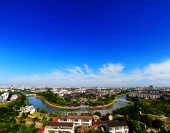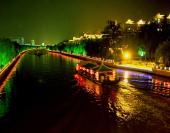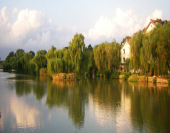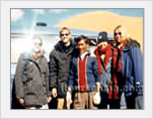
Yangzhou Grand Canal Guide
-Travel to Yangzhou Grand Canal Yangzhou, where Marco Polo once served as a municipal official, is a city with a history of 2,500 years, tracing back to the Spring and Autumn Period when it was called Guangling. The city was one of ten cities in the world around 1800 A.D, which had the largest population over half million.
Yangzhou, where Marco Polo once served as a municipal official, is a city with a history of 2,500 years, tracing back to the Spring and Autumn Period when it was called Guangling. The city was one of ten cities in the world around 1800 A.D, which had the largest population over half million.
The city has been well known for its once brilliant historic role in Chinese history and one of the first 24 cities that were announced as the Historical and Cultural Cities in China. Until the 19th century, Yangzhou acted as a major national political, financial and trade center and a transport hub duo to its excellent location at the junction of the Yangtze, the Grand Canal and the Huaihe River. This historical period had left Yangzhou a large number of treasures, including valuable architectures and arts, splendid culture and well-known celebrities.
 Built on flat land a few miles north of the Yangtze River, Yangzhou is criss-crossed by a network of canals of all size, from the Grand Canal of China (which, actually, has two routes - the old, next to the city center, and the modern, a few miles to the east) to small neighborhood canals.
Built on flat land a few miles north of the Yangtze River, Yangzhou is criss-crossed by a network of canals of all size, from the Grand Canal of China (which, actually, has two routes - the old, next to the city center, and the modern, a few miles to the east) to small neighborhood canals.
Several walled cities existed here over the two millennia, but even the last (Ming Dynasty) wall has been demolished long ago. Still, the contours of the Ming city wall are traced by the canals surrounding the two kilometer square in Yangzhou's city center. New neighborhoods have grown for about 5 km or more in all directions outside of the former walled city.
 Most of Yangzhou is built on a rectangular grid street plan. The main east-west artery is Wenchang Rd, divided into the West, Central, and East sections ( Wenchang Xi Lu, Wenchang Zhong Lu, Wenchang Dong Lu). The main north-south street within the old city center in Wenhe Road, with the North and South sections (Wenhe Bei Lu, Wenhe Nan Lu) divided by Wenchang Road. The Wenchang Pavilion (Wenchang Ge), one of the city's few surviving historic buildings, stands in the traffic circle at the crossing of Wenchang and Wenhe Roads, which is often viewed as the city's symbolic center point. Many of the city's upscale shopping centers, hotels, restaurants, and entertainment venues are found within a few blocks of this circle.
Most of Yangzhou is built on a rectangular grid street plan. The main east-west artery is Wenchang Rd, divided into the West, Central, and East sections ( Wenchang Xi Lu, Wenchang Zhong Lu, Wenchang Dong Lu). The main north-south street within the old city center in Wenhe Road, with the North and South sections (Wenhe Bei Lu, Wenhe Nan Lu) divided by Wenchang Road. The Wenchang Pavilion (Wenchang Ge), one of the city's few surviving historic buildings, stands in the traffic circle at the crossing of Wenchang and Wenhe Roads, which is often viewed as the city's symbolic center point. Many of the city's upscale shopping centers, hotels, restaurants, and entertainment venues are found within a few blocks of this circle.
More Attractions in Yangzhou
Your Question & Quick Answer*We welcome and appreciate your questions & reviews
Booking Procedures | Terms & Conditions | Payment Methods | Links | Site Map | About Us | Contact Us | Travel Agent
Copyright 2008, All rights reserved.. itourbeijing.com professional china travel guide and china travel service
TEL: 86-10-85711972 (Universal) 1-888-288-9328 (North America) E-mail: contact@itourbeijng.com
Tours Index | China Tours | Beijing Tours | Xi'an Tours | Shanghai Tours | Guilin Tours | Tibet Tours
China Travel | Beijing Travel | Shanghai Travel | Xi'an Travel | Guilin Travel |Beijing Map
China Golf | Beijing Golf | Shanghai Golf | Xiamen Golf | The Great Wall Travel | Yangtze Cruise | Travel Picture



